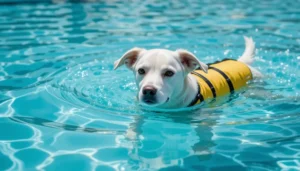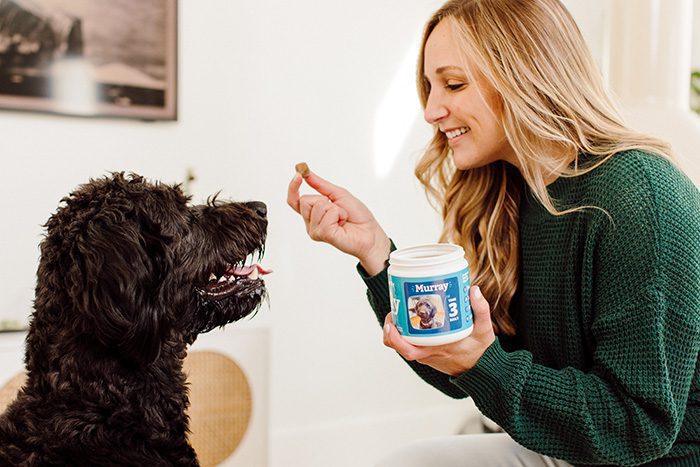How to prevent heatstroke in dogs? Keep your dog hydrated, limit exercise during the hottest part of the day, provide shade or a cool surface, and never leave them unattended in a vehicle. Spot early warnings such as heavy panting, drooling, or bright red gums, then act fast to cool them down before a full‑blown heatstroke occurs.
Staying ahead of the heat means planning each outing, setting up a home cooling zone, and knowing the exact steps to take if your pet shows distress.
This guide walks you through the science of canine overheating, practical prevention tactics, emergency first aid, and a quick‑reference checklist you can print and keep handy.
Understanding Heatstroke in Dogs
Heatstroke, also called hyperthermia, happens when a dog’s core temperature rises above 104 °F (40 °C) and the body can no longer dissipate heat.
Unlike people, dogs cannot sweat effectively; they rely on panting and limited paw‑pad perspiration. When these mechanisms fail, the internal temperature spikes, damaging blood vessels, clotting pathways, and vital organs.
Key points:
- Core temperature > 104 °F = heatstroke.
- Panting is the primary cooling method, but it can be overwhelmed quickly.
- Rapid onset: In a hot car, fatal temperatures can be reached within 10‑15 minutes.
Because of these factors, even a comfortable‑looking dog can be in danger when the temperature climbs modestly above normal.
Why Dogs Are More Vulnerable Than Humans
Dogs have three physiological traits that make them especially prone to overheating:
| Trait | How It Affects Heat Regulation |
|---|---|
| Limited sweat glands | Airflow over the moist tongue and nasal passages removes heat, but high humidity impedes evaporation. |
| Panting reliance | Airflow over moist tongue and nasal passages removes heat, but high humidity impedes evaporation. |
| Breed anatomy | Brachycephalic (flat‑faced) dogs have narrowed airways; thick‑coated breeds retain heat longer. |
Because of these factors, even a comfortable‑looking dog can be in danger when the temperature climbs modestly above normal.
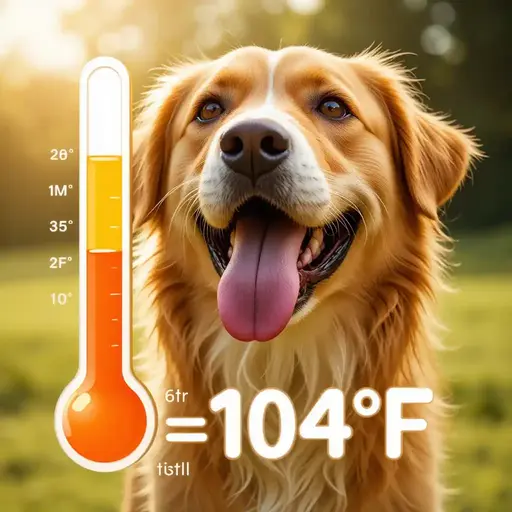
Key Risk Factors and High‑Risk Dogs
Not every dog is equally at risk. Knowing the specific factors that raise vulnerability helps you tailor preventive steps.
- Breed predisposition – Bulldogs, Pugs, and other brachycephalic breeds; Siberian Huskies, Alaskan Malamutes, and other heavy‑coated dogs.
- Age – Puppies and senior dogs have underdeveloped or declining thermoregulation.
- Weight – Obese dogs generate more internal heat and have poorer circulation.
- Medical conditions – Heart disease, respiratory disorders, diabetes, and thyroid problems limit a dog’s ability to cope with heat.
- Environmental exposure – Cars, sealed garages, hot pavement, and high‑humidity days increase risk dramatically.
If your dog falls into any of these categories, treat every hot day as a potential emergency and apply the most stringent precautions.
Early Warning Signs of Heatstroke
Recognizing heatstroke early can save a life. Look for the following signs, moving from subtle to severe:
Early Warning Signs
- Excessive panting – Faster, louder breathing than usual.
- Drooling – Thick, foamy saliva.
- Lethargy – Reluctance to move or response delays.
- Bright red or pink gums – Indicates vasodilation and overheating.
- Increased thirst – Constant drinking or searching for water.
Advanced Symptoms
- Vomiting or diarrhea – May contain blood; a sign of gastrointestinal damage.
- Collapse or unsteady gait – Loss of coordination.
- Seizures – Brain dysfunction from extreme temperature.
- Pale, blue‑tinged, or mottled gums – Shock or circulatory failure.
- Unresponsiveness – Coma or cardiac arrest in extreme cases.
If any of these appear, move to the first‑aid steps immediately and call your veterinarian.
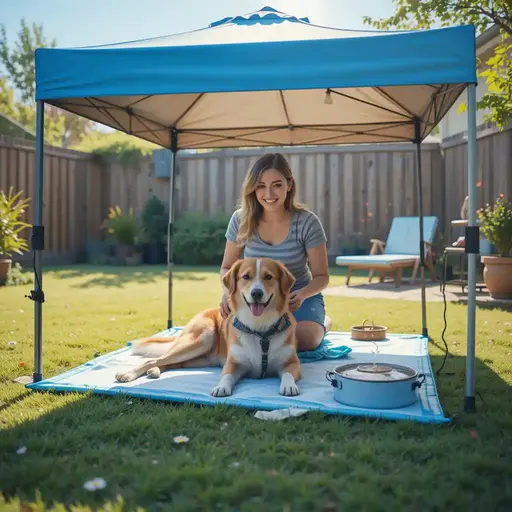
How to Prevent Heatstroke in Dogs: Proven Strategies
Below are the most effective, science‑backed methods to keep your dog safe. Each strategy can be applied at home, during walks, or while traveling.
Hydration & Water Access
- Fresh, cool water at all times – Change water every few hours; add a few ice cubes to keep it chilled.
- Portable water bottles – Carry a collapsible bottle on hikes; fill a bowl at regular intervals.
- Water‑rich foods – Offer cucumber slices, watermelon chunks (seedless), or bone‑broth ice cubes as treats.
Timing & Exercise Management
- Walk before 10 a.m. or after 6 p.m. – Temperatures are lowest, and humidity is often reduced.
- Shorter, slower walks – Limit each outing to 15‑20 minutes on very hot days; let your dog sniff and explore slowly.
- Avoid high‑intensity games – Replace fetch with gentle tug‑of‑war or mental enrichment toys.
Shade, Surfaces, and Cooling Zones
- Provide shade – Use a canopy, beach umbrella, or a sturdy dog house with a reflective roof.
- Avoid hot pavement – Test the surface with the back of your hand; if it’s too hot for you, it’s too hot for paws.
- Cooling mats and pads – Gel‑filled or water‑based mats stay cool for hours; place them in the dog’s favorite resting spot.
Car Safety
- Never leave dogs unattended in a vehicle, even with windows cracked.
- Use a pet‑friendly parking spot – Shade and ventilation reduce interior temperature.
- If you must travel, keep the AC on and monitor the dog’s breathing and behavior closely.
Home Cooling Zone
| Item | How to Use | Why It Helps |
|---|---|---|
| Fans | Point a fan at your dog’s resting area; add a damp towel over the dog’s back. | Increases evaporative cooling. |
| Ice packs (wrapped in towels) | Place on the belly, paws, or under the sleeping mat. | Draws heat away without causing frostbite. |
| Air conditioning | Set thermostat to ≤ 75 °F (24 °C). | Reduces ambient temperature, especially for seniors and brachycephalic breeds. |
| Wet blankets | Drape a cool, wet sheet over the dog for 10‑15 minutes. | Provides gentle, uniform cooling. |
Nutritional Adjustments
- Lower-calorie meals during heat waves – Digestion creates internal heat.
- High‑moisture foods – Wet kibble or home‑cooked meals with broth.
- Electrolyte solutions (vet‑approved) for dogs that sweat heavily during work or training.
Use of Cooling Products
- Misting collars – Deliver a fine spray to the neck and head; works best in low‑humidity conditions.
- Portable misting stations – Small, battery‑operated devices that spray a fine mist when the dog passes.
- Cooling vests – Soak the vest in water, wring out excess, and let it evaporate while the dog wears it.
Monitor Temperature Directly
- Digital rectal thermometer – Check every few hours on very hot days; a reading above 104 °F signals immediate action.
- Wearable temperature monitors – Some smart collars provide real‑time alerts to your phone.
Creating a Summer Heat‑Safety Plan for Your Dog
A structured plan makes prevention automatic. Follow the steps below to build a routine that fits your lifestyle and your dog’s needs.
Step‑by‑Step Checklist
- Assess risk – Identify breed, age, weight, and health conditions.
- Set a daily hydration schedule – Fill water bowls at 7 a.m., 12 p.m., and 5 p.m.; add ice cubes in the afternoon.
- Schedule walks – Mark “cool‑walk” times on your calendar (e.g., 6‑8 a.m., 7‑9 p.m.).
- Prepare cooling gear – Place the cooling mat, fan, and ice pack in the dog’s favorite spot each night.
- Pack an emergency kit (see table below).
- Teach household members – Ensure everyone knows the signs of heatstroke and the first‑aid steps.
Emergency Kit Checklist
| Quick access to an emergency vet. | Quantity | Reason |
|---|---|---|
| Cooling towel or mat | 1 | Immediate surface cooling. |
| Non‑slip bowl | 1 | Prevent spills while cooling. |
| Digital rectal thermometer | 1 | Verify core temperature. |
| Vet contact card | 1 | Quick access to emergency vet. |
| Portable water bottle & collapsible bowl | 1 set | Hydration on the go. |
| Vet‑approved electrolyte solution | Small bottle | Replaces lost salts if needed. |
| Blankets (for warmth after cooling) | 2 | Prevent hypothermia after rapid cooling. |
| Leash & harness | 1 set | Safe control during emergency walks. |
Keep this kit in your car, at the front door, and in any travel bag.
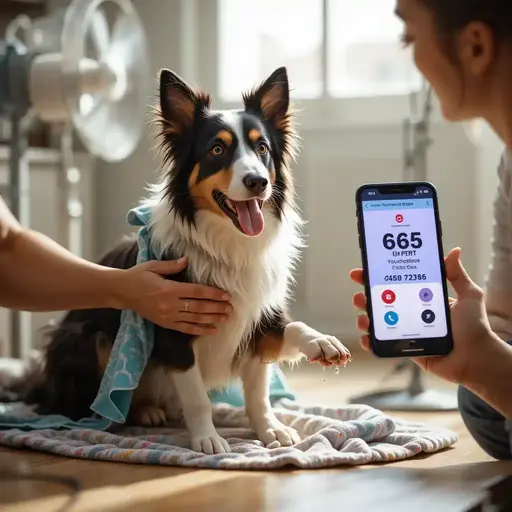
First‑Aid: What to Do If Your Dog Shows Signs of Heatstroke
When seconds count, follow this protocol to stabilize your dog before professional care.
- Move to a cool, shaded area – An air‑conditioned room or a shady spot away from direct sun.
- Apply lukewarm water – Soak a towel in cool (not ice‑cold) water, then gently wring and place it on the neck, armpits, groin, and paws. Repeat every 5 minutes.
- Use fans for airflow – Position a fan to blow across the wet towel; this speeds evaporative cooling.
- Offer small sips of water – If the dog is conscious, let it drink a few teaspoons every few minutes. Do not force water.
- Monitor temperature – When the rectal temperature drops to 103 °F (39.5 °C), stop cooling to avoid hypothermia.
- Contact your veterinarian – Even if the dog seems better, internal damage can linger. Transport the dog safely, keeping the cooling towel in place.
Avoid: ice baths, submerging the whole body in cold water, or applying ice directly to the skin. These can cause vasoconstriction, slowing heat loss, and may lead to shock.
Common Myths About Dogs and Heat
| Myth | Reality |
|---|---|
| “Short‑haired dogs don’t overheat.” | Coat length is irrelevant; all dogs rely on panting, which falters in high humidity. |
| “A fan alone is enough.” | Fans improve airflow but don’t replace evaporative cooling; combine with wet towels or mats. |
| “If my dog is panting, it’s fine.” | Panting is the first line of defense; heavy panting can be a sign the dog is already close to heatstroke. |
| “Dogs can handle desert heat because they’re built for it.” | Even desert breeds need shade, water, and rest; they can’t dissipate heat indefinitely. |
| “Leaving a window cracked keeps the car safe.” | Interior temps still rise rapidly; a cracked window provides negligible cooling. |
Understanding the truth behind these misconceptions helps you make smarter, safer choices.
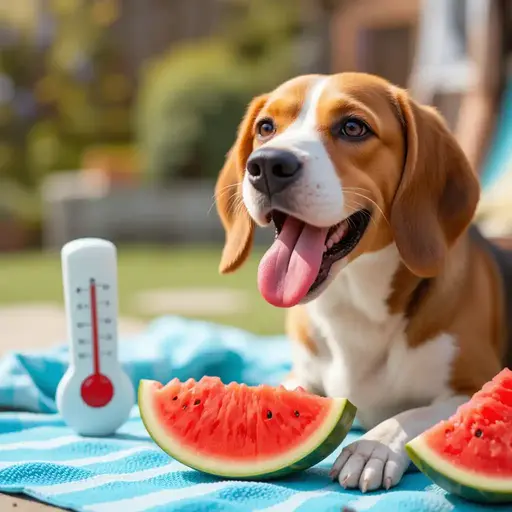
FAQs
How long can a dog safely stay outside in 90 °F weather?
Most dogs begin to overheat after 15‑20 minutes in direct sun at 90 °F, especially if they’re a brachycephalic breed or overweight. Keep outings short and provide frequent water breaks.
Can I use a regular human cooling towel on my dog?
Yes, as long as it’s not too cold. Wet the towel, wring out excess water, and place it on the dog’s neck, back, and paws. Avoid frozen towels that can cause skin irritation.
What’s the safest temperature for a dog’s indoor environment during summer?
Aim for 70‑75 °F (21‑24 °C) with good air circulation. This range prevents overheating while keeping senior or obese dogs comfortable.
Are there any vitamins or supplements that protect dogs from heatstroke?
No supplement can replace proper cooling and hydration. However, omega‑3 fatty acids support skin health and may aid overall circulation; always discuss any additions with your vet.
How can I tell if my dog’s breath is normal after a hot walk?
A healthy dog’s panting should be rapid but shallow, with a relatively quiet sound. Gasping, foamy saliva, or audible wheezing indicate respiratory distress and require immediate attention.
Conclusion
Preventing heatstroke in dogs hinges on consistent hydration, timing activities for cooler parts of the day, providing shade and cooling surfaces, and never leaving a pet unattended in a hot vehicle.
Recognize early signs—excessive panting, drooling, red gums—and act quickly with lukewarm water, fans, and veterinary care. By building a daily heat‑safety routine and keeping an emergency kit on hand, you’ll give your dog the best chance to stay cool, happy, and healthy all summer long.
Action tip: Print the quick‑prevention checklist above, place it on your fridge, and review it each morning before any outdoor activity. This simple habit turns prevention into a daily ritual and protects your dog from the hidden dangers of summer heat.


